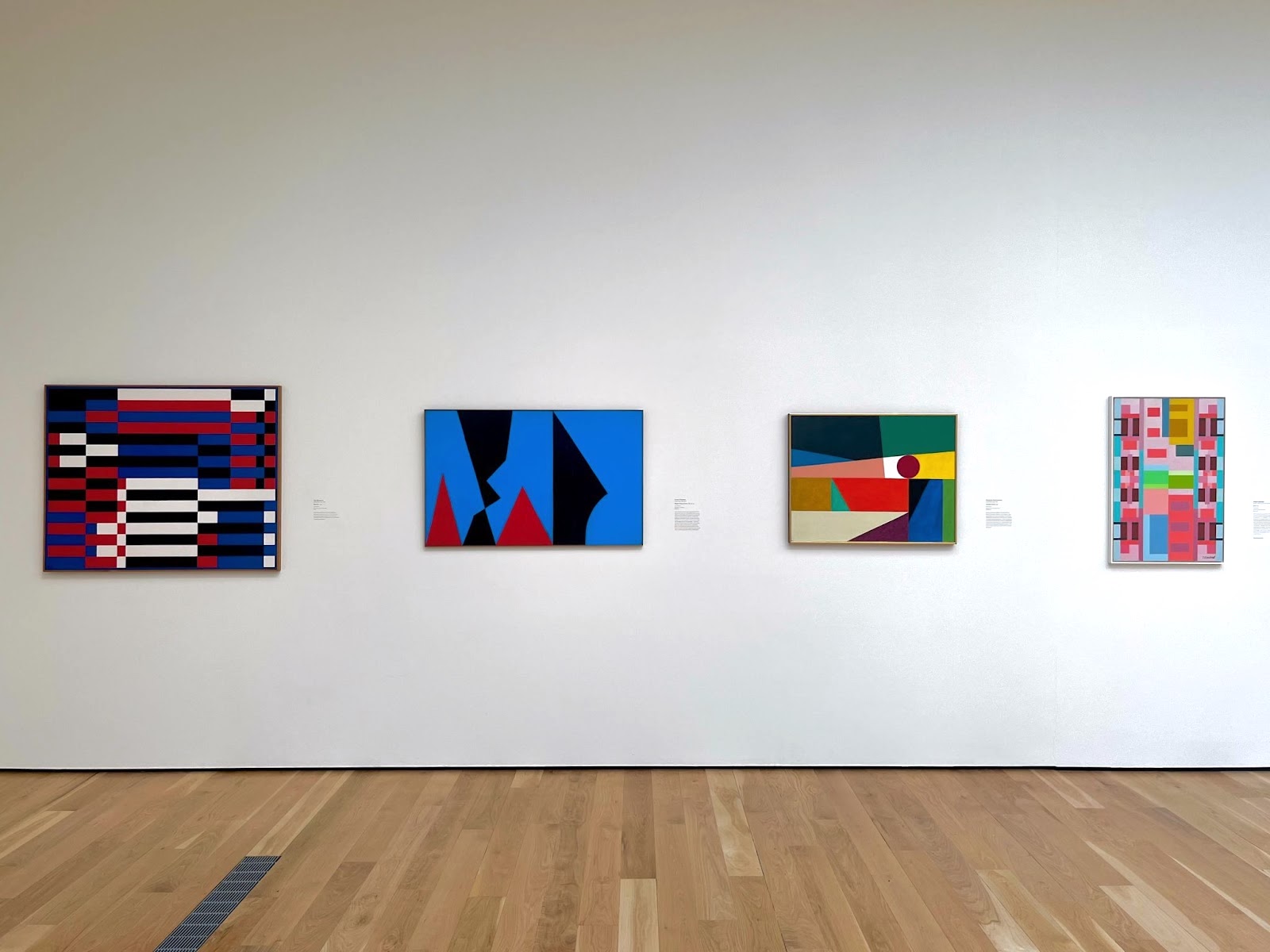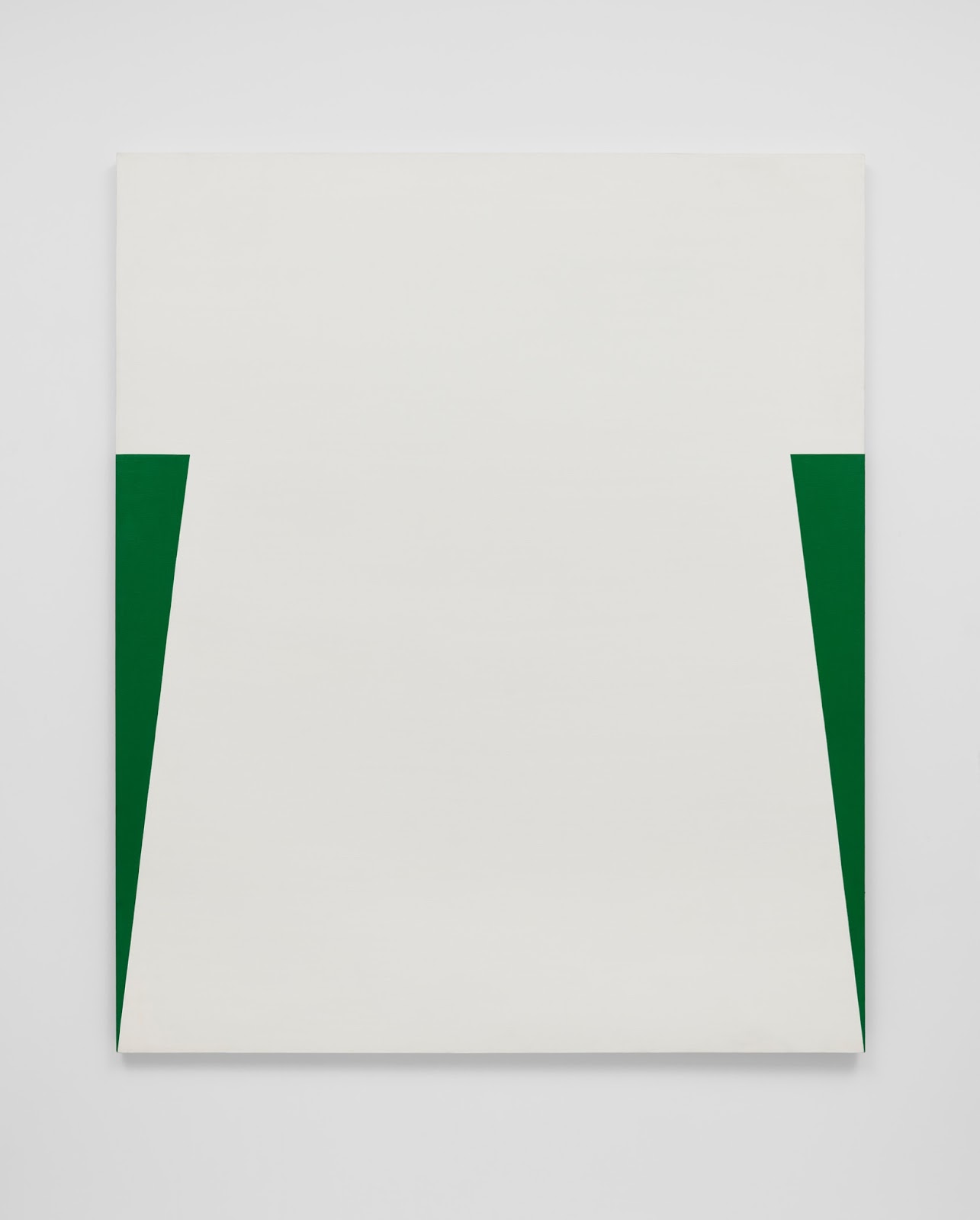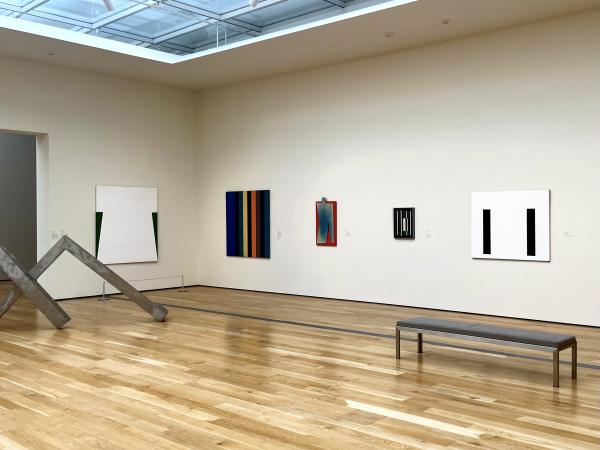A new selection of abstract paintings from the 1940s through the 1970s, including the promised gift of an important early painting by Carmen Herrera, is now on view in the Modern Art Galleries in BCAM, Level 3. Although geometric or hard-edge abstraction had been explored by various artists in Europe earlier in the 20th century—particularly those associated with Eastern European Constructivism, the Bauhaus in Germany, and and the De Stijl movement (including Piet Mondrian) in the Netherlands—the vocabulary came to the fore on multiple continents in the 1950s and 1960s. It was, in significant part, a reaction to the emotive and gestural tendencies of Abstract Expressionism in the United States and art informel (literally, art without form) in Europe, which dominated art-making in the years following World War II.
A number of these artists, including Karl Benjamin, Lorser Feitelson, Frederick Hammersley, June Harwood, and John McLaughlin, were based in Southern California, and were dubbed “Abstract Classicists” by curator-critic Jules Langsner in 1959, distinguishing them from the Abstract Expressionists based mainly on the East Coast.

Although their works are united by clean lines and colorful forms, these artists express a variety of conceptual concerns in their works. Some responded to the political climate of their times. Peter Krasnow’s K-3 (1945) is a celebration in candy-colored pink, red, and blue rectilinear forms meant to conjure a sense of optimism during the bleak final years of World War II: “a sense of protest to ease the pain,” in the artist’s words. The formality and austerity of John McLaughlin’s black, white, and gray Untitled (1955), meanwhile, reflect the artist’s interest in Japanese culture, developed during his extended sojourns in Japan in the 1930s, and his work with Japanese-speaking linguists during the war. Lorser Feitelson made his Magical Space Forms series at the height of Cold War hysteria, when one of his Federal Art Projects was accused of being Communist-inspired. The jagged shapes of Magical Space Forms, No. 12 (1951) have an anxious edge, evoking what the artist called the “deep disturbance of [his] time.”
Other works are purely formal investigations. The crisp lines of June Harwood’s Blue, Violet, Green (c. 1963) were born out of the artist’s interest in the geometry found in nature. Karl Benjamin’s grid-based Bars #7 (c. 1955) is the result of an intuitive approach to painting, without reference to the visible world, as is the colorful Around a round (1959) by Frederick Hammersley, who described his process of “compos[ing] a painting by hunch.”

The gallery also features the promised gift of a painting by Cuban-born Carmen Herrera, whose sculpture Estructura Verde was previously on view on the Smidt Welcome Plaza. White and Green (1971), part of the series of minimal geometric canvases for which Herrera is best known, epitomizes the artist’s iconic formal purity and her dedication to the “beauty of the straight line.” The play between positive and negative space in this large white painting with smaller, symmetrical green triangles suggests spatial recession and reflects Herrera’s architectural training.
You can find these works and more in the Mid-Century Geometric Abstraction gallery in the Modern Art Galleries in BCAM, Level 3.



